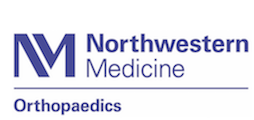|
|

|
« Back
I am not a religious person but I know there are religious groups who do not allow blood transfusions. I am scheduled for spinal surgery (fusion) and would like to request no blood transfusion, too. Can I do this without being part of an organized religion?
|
|
As a patient and health care consumer, you have the right to make requests of this nature regardless of religious orientation or religious affiliation. Your surgeon will work with you to answer your concerns and meet your needs. But he or she will always keep your safety as number one when making decisions before, during, and after surgery.
During surgery steps can (and will) be taken to minimize blood loss. These measures can include 1) positioning you in such a way as to elevate the area of blood loss, 2) use of a tourniquet, 3) gentle handling of tissues, and 4) minimally invasive technique or MIS (instead of an open incision). The traditional open incision involves cutting through the many layers of spinal muscles and other soft tissue structures to gain access to the vertebral bones.
With minimally invasive surgery (MIS), a tube-shaped instrument is passed down through the soft tissues between muscle groups. The soft tissue structures are pushed aside without cutting them. This technique reduces the risk instability from damage to muscles, tendons, ligaments, and bone. MIS also makes it possible for patients to get up and moving again sooner, allowing for faster recovery. There are also surgical instruments that minimize blood loss such as the harmonic scalpel, argon beam and radiofrequency assisted thermal ablation.
Just before surgery several units of blood can be removed and replaced with a crystalloid or colloid solutions so blood volume is maintained. This process is referred to as Acute Normovolemic Hemodilution (ANH). It can be used when blood loss is expected. With ANH, any fluid lost during surgery contains fewer red blood cells and clotting factors are preserved. At the conclusion of the surgery the blood is reinfused to the patient. The entire process is completed through a closed circuit.
Another way to impact blood loss in the operating room is to avoid hypothermia (low body temperature). Hypothermia can prevent normal platelet function resulting in increased blood loss. During surgery, blood that is lost can be suctioned and saved. It is collected, mixed with anticoagulants, filtered and reinfused to the patient. The use of cell salvage can continue into the post-operative phase through the use of drains.
You will be interested to know that this idea of Bloodless Medicine and Surgery (the use of technological and pharmaceutical techniques to minimize blood loss and avoid the use of allogeneic blood transfusions), has developed in recent years. It is now a well-known concept referred to as Patient Blood Management. Although the community of Jehovah’s Witnesses who seek medical care but decline the use of most forms of transfusions helped spearhead these changes, anyone can benefit from them.
Patient Blood Management uses evidence-based medicine to develop an individualized plan for each person to minimize or eliminate the need for transfusions. Ask your surgeon about this concept at your next appointment before the scheduled surgery.Find out what can be done in your individualized plan to avoid unnecessary blood transfusion.
|
References:
|
|
|
« Back
|
|
|
|
*Disclaimer:*The information contained herein is compiled from a variety of sources. It may not be complete or timely. It does not cover all diseases, physical conditions, ailments or treatments. The information should NOT be used in place of visit with your healthcare provider, nor should you disregard the advice of your health care provider because of any information you read in this topic. |
 | All content provided by eORTHOPOD® is a registered trademark of Mosaic Medical Group, L.L.C.. Content is the sole property of Mosaic Medical Group, LLC and used herein by permission. |
|
